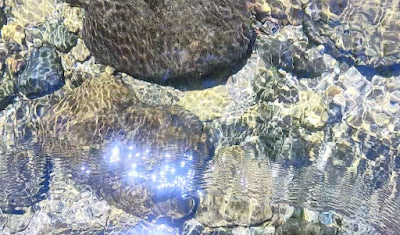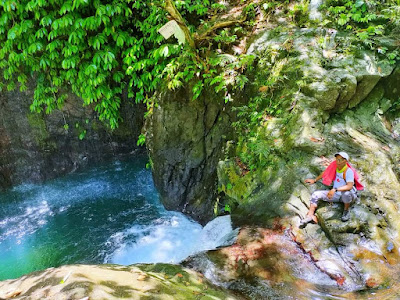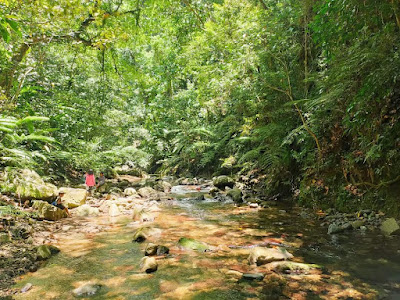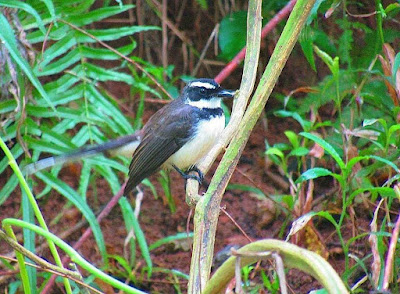APAYAO, THE LAST ECOLOGICAL FRONTIER OF THE CORDILLERAS
📌 Katablangan, Conner, Apayao, CAR
Making up the northern portion of the Cordillera mountains, the Philippines' second most extensive range, Apayao province is an ecological anomaly, despite being the youngest in the Cordillera Region and the least densely-populated province in the entire country.
Yet, it is this sparsely-peopled characteristic that makes Apayao the last ecological frontier in the Cordilleras, almost untouched by the madness of even the seasoned travelers, though still out from most adventurer's itinerary. It is this remoteness, the thickness of its tropical rainforests, mostly uncharted, out-of-the-way and trail-less terrains that preserves its dynamic nature frontiers and unique wilderness, incomparable from most provinces. It is the region's landlocked environ; clasped between the immense Cagayan Valley in the east, the narrow strip of Ilocandian plains in the west and the equally lofty Caraballo range in the south that sculpted the multi-faceted milieu of the grand Cordilleras.
 |
| Highlands of Conner, Apayao Province |
A remarkable inventory of nature's bounty can be found in the municipality of Conner, the southernmost town of Apayao, sharing its border with the province of Kalinga.
Staring stunned by the verdant atmosphere, the outskirts of Conner, where the predominant ethnic group known as the Isnegs thriving very well in harmony with the nature, is a place of richness to behold; richness that are tangibly rarer on the entire solar system than the precious diamonds - trees.
 |
| Richness of the tropical rainforest of Apayao |
The westernmost, the last, the largest and the wildest of all barangays found in Conner, the outskirts of Katablangan is a majesty of a kingly nature wonder. It is surrounded by glass-clear, potable rivers, super-ethereal waterfalls, most of which still undiscovered by many and mountains adorned by lush tropical forest canopies, a perfect thriving ground for the endangered, and national icon Philippine eagle. In fact, one specimen was caught by a local Isneg hunter, turned it over to DENR Baguio before finally transferred to an eagle sanctuary in the province of Laguna; a testimony of how nurturing the thick jungles of Apayao to myriad forms of wild biodiversity and other players of the fragile ecosystem.
 |
| Apayao is surrounded by glass-clear, potable rivers |
The unpolluted rivers of Barren, Alawing and Lakkong that emanate from the headwaters of Katablangan near the border of Abra province render fishes and other bounty for the local consumption; sometimes the exotic but tasty igat (river eel), the crispy-when-fried palileng (goby fish) and the delectable agatol, alternately called kappi (forest crabs) are served to visitors who happen, or atleast brave enough to let the night pass in Katablangan, a once covered-in-darkness barangay, longing for illimination at night; until the success of their hydro power plant (Katablangan Micro Hydro-Power Plant) that powered, lighted the village.
 |
| The power source of Katablangan Mini Hydro-Power Plant |
The small community of Katablangan is off the target in terms of tourism industry because of its craggy-muddy roads, exclusively for horses or sturdy-bodied motorcycles, precipitous cliffsides posing perils to people when raining and its kilometric distance from the main town center; all contribute to its seemingly unnoticed, unheard reputation but a silent refuge of insurgency - atleast to people who have little or worse, lacking knowledge about the truths of the place.
A view of the outskirts of Conner, Apayao
That is not the real case however; if one could just able to commune with what Katablangan could offer - nature. Its consolation: a combo of supernatural nature's allure and the hospitality of the local people joining as one in celebrating one's presence that figuratively, happens once in a blue moon. It is uncommon to see unfamiliar faces in this village, much less if the person is a foreigner, because outsiders visit Katablangan only for reasons of certain projects, surveillance, humanitarian efforts or concerns in relation to the environment and nothing else, but absolutely not for leisure travel.
 |
| A supernatural nature's allure |
But a true traveler knows no boundaries; be it in the heavily thronged Tagaytay mountains, bustling metropolis or in the hardly reached uplands anywhere in Apayao. A real traveler chooses the harder paths without hesitation; he is always on the run for the vast unknown; he wants to be different, not the sorts of a commoner...
 |
| A true adventurer always chooses the hardest paths |
I call it attraction and love at first sight. I have not been in a community as far-flung as the outskirts of Conner - in Katablangan, and though, the sugarcane wine or "basi" played some supporting role with that statement.
It was not true nevertheless, that the Isnegs are notorious and fierce head-hunters. In fact, they are very reserved, able to get along with other ethnic groups and have that unique beauty which is different and doesn't blend or compared well with the sightliness of other Cordilleran ethnicity such as the Ifugaos, Kalingas or the Igorots.
 |
| Sugarcane wine or "basi" is a chief local produce in Apayao |
During our course of agenda, we attended a traditional Isneg party that night of our stay in the village of Katablangan. There is beauty and amazement in the sounds of the Cordilleran night, exciting my heart with its beats in congruence to the clanging "gangsa". The folksmen and women gracefully danced under the moonlight; every movement has meaning in a sacred drumming of the sweet-clangoring "gangsa", yet I was so fascinated by the warmth and friendliness the Isnegs have shown.
 |
| Apayao's wild nature (captured by Jovie Tangilen) |
That night, before we leave by morning, the echoes of the Cordilleras resounded through the tropical rainforests from dusk until dawn. I know there is a part in here that captured my very heart...
 |
| A typical Isneg beauty: capturing a wanderer's heart |
Apayao's wild nature is the well spring of its beauty, and the reason that travelers, wanderers and poets will continue to probe for what the province never can give but always offers. I have a memory of that feeling in day one from the bumpy motorcycle ascent through the rainforest terrains of Katablangan, down to our last night with its welcoming people; a woman, epitome of the unique allure of the Cordilleras, an embodiment of a modest lady now rare and rarely seen, passed by before me, and for a brief moment, I stared her coy, glimmering eyes.
 |
| Wilderness, the essence of Apayao |
An instant later, she disappeared, melted in sight of the night leaving with me a look into the eye of unknowable wilderness that is the essence of Apayao, the last ecological frontier of the Cordilleras.
Supplementary:
https://m.facebook.com/story.php?story_fbid=pfbid0hoc8zU2FGsYsLBUcthh2pugsEa9dZxrmdnEy53PzxtqAZCT1moSZ3jrqfcqroZAhl&id=100007283687906
https://m.facebook.com/story.php?story_fbid=pfbid02SC31JirsoNiFFPhDV35QHtx8jjsnxuCxjWQ43HsSE9cA8LKrFP5Jna5gVqJRAYuAl&id=100007283687906
#ExploreCordilleras #BeyondCagayan #IntoTheWildSeries #TheGreatOutdoors










































